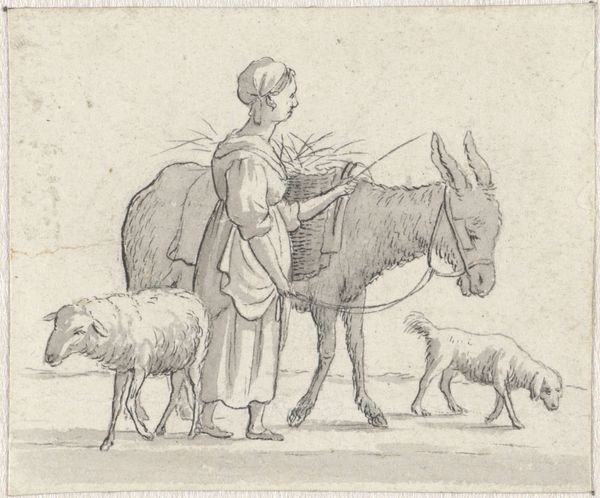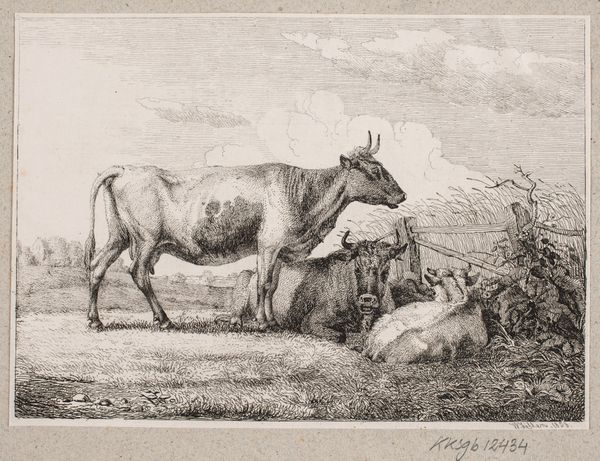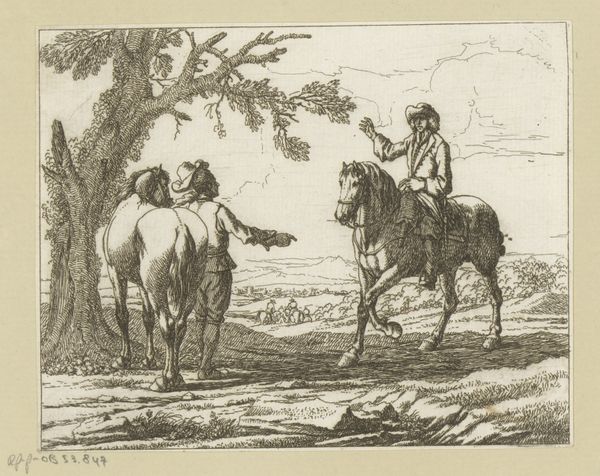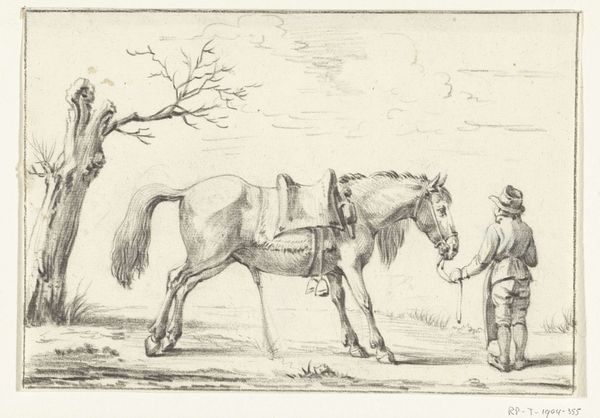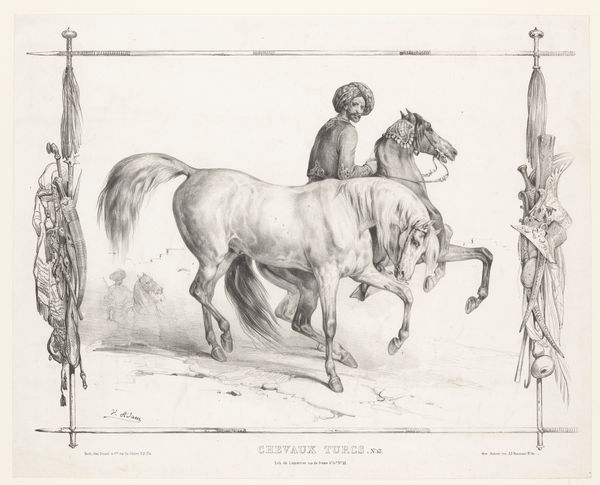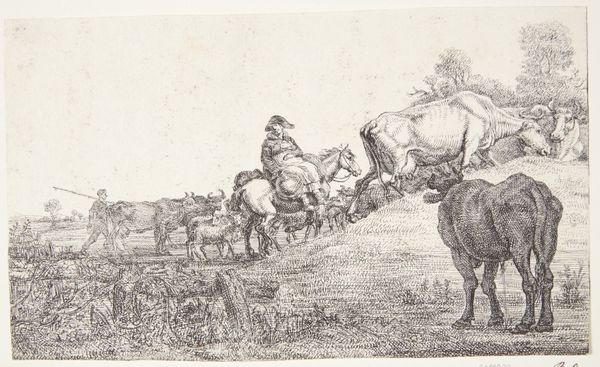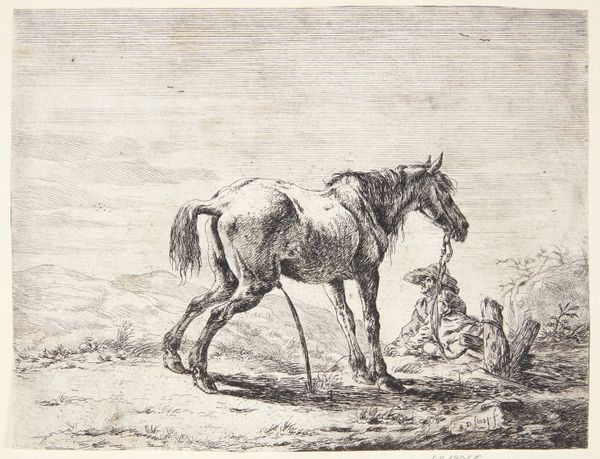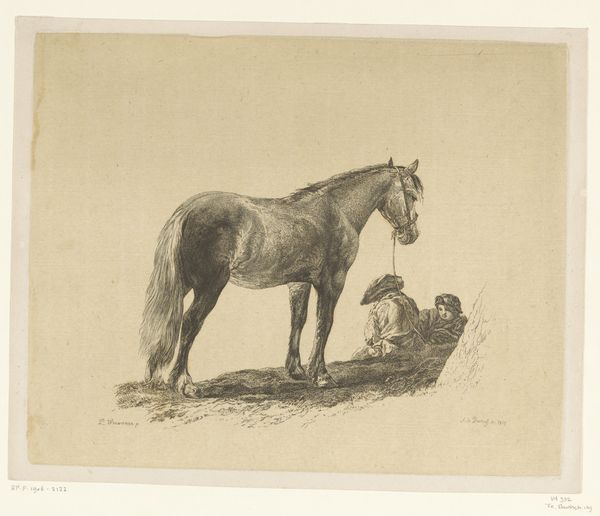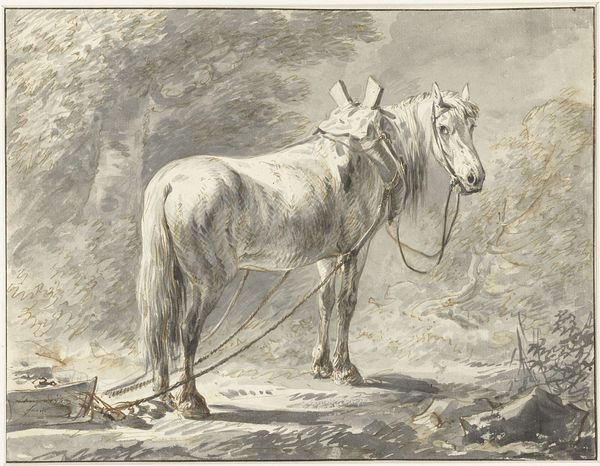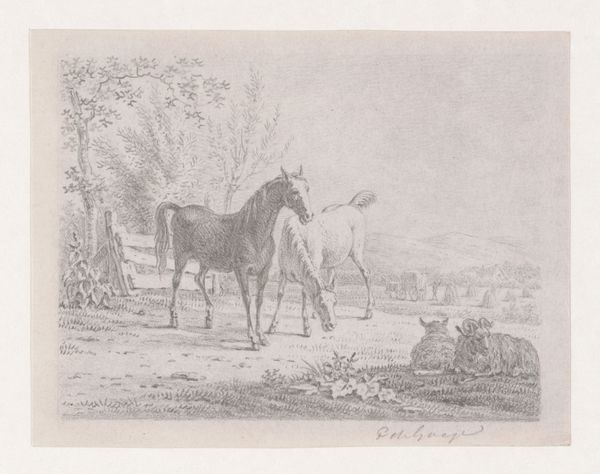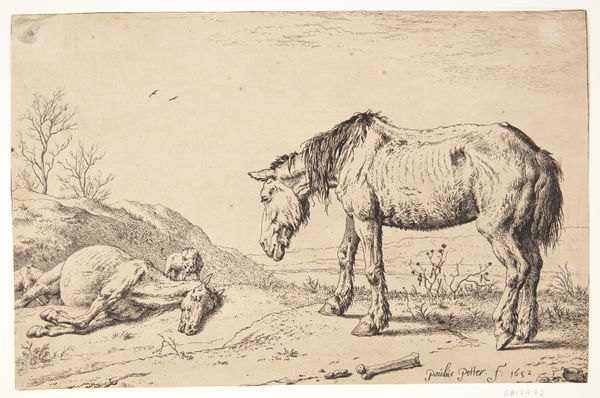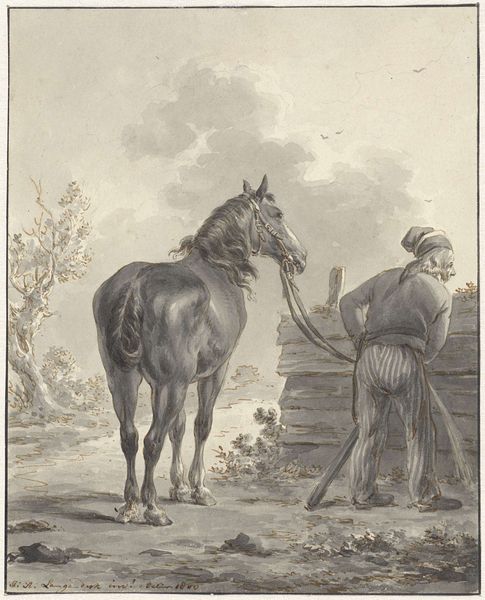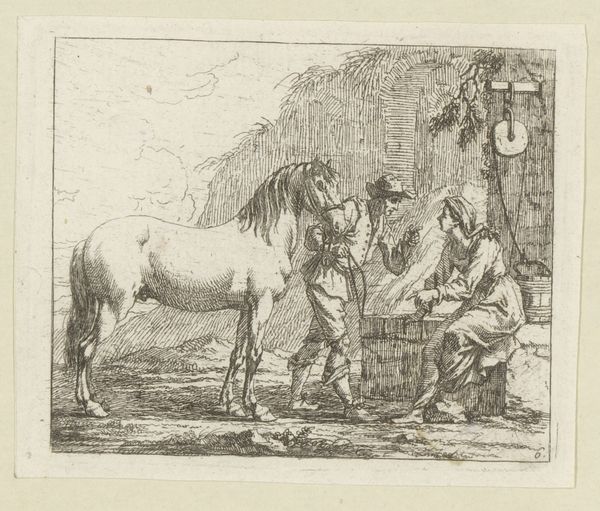
drawing, paper, pencil
#
portrait
#
drawing
#
pencil sketch
#
landscape
#
figuration
#
paper
#
romanticism
#
pencil
#
horse
#
genre-painting
Dimensions: height 200 mm, width 270 mm
Copyright: Rijks Museum: Open Domain
Editor: Here we have "Boer met twee paarden bij een drinkbak," or "Farmer with two horses at a watering place," created anonymously sometime between 1800 and 1900, using pencil on paper. It's a lovely, simple sketch. What strikes me is the clear depiction of everyday life; the horses drinking, the farmer casually on horseback. What do you see in it? Curator: I’m immediately drawn to the paper itself and the labor involved in its creation. In a pre-industrial context, both the paper and the pencil are products of significant handcrafting. Consider the social structures supporting that production. Who made the paper? What were their working conditions? Editor: That's an interesting perspective! I hadn't considered the socio-economic background behind the materials themselves. So, you are seeing the drawing less as a window into a scene, and more as a record of specific craft processes? Curator: Exactly. Think about the availability of art supplies at the time. This wasn't a mass-produced sketch; it involved careful sourcing of materials. Each pencil stroke is also a record of the artist's labor – the hand movements, the pressure applied, the very physical act of creating the image. Were preliminary sketches also required, impacting total labour input? Editor: That makes me see the drawing in a totally new light! It's not just the image represented, but the whole process of material production and artistic creation that gives it value. Curator: Indeed. The image depicts horses working, being cared for... while this pencil drawing is also work! These intertwined realities, the depicted labour and the artistic creation, encourage us to question what we define as “art” and what as simply labour. It is art when consumed and placed in a gallery. But the making is labor. Editor: This has really made me rethink my initial impression of the artwork! I'll definitely look at art with more material awareness now. Thank you! Curator: My pleasure! Considering materiality helps unlock layers of meaning within art often overlooked.
Comments
No comments
Be the first to comment and join the conversation on the ultimate creative platform.
